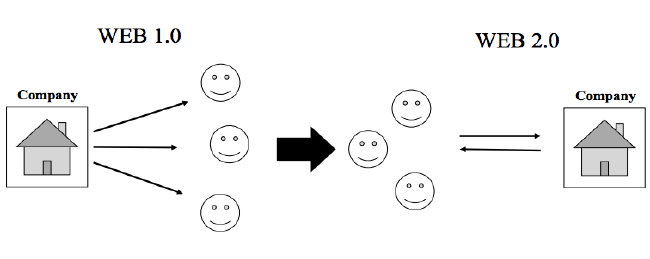ABSTRACT
Purpose
The purpose of this thesis is to gain a better understanding of how companies use their brands on social media to engage consumers.
Theoretical Framework
The theoretical framework brings up essentials of brand equity, brand communities, brand trust and the Internet as a marketing platform from previous studies and current statistics.
Methodology
This thesis is based on a qualitative method, in order to get a wide comprehension of the engagement on social media. Six interviews were made with marketing professionals working with the brands Barnängen, Got2b and Polarn O. Pyret at two case companies.
Empirical Framework
The empirical framework presents the outcome of six interviews with marketing professionals working with the three brands Barnängen, Got2b and Polarn O. Pyret as well as observations from the brands’ brand communities on social media.
Conclusion
The conclusion made in this thesis is that there is not one single “right way” to create engagement since it is tremendously many factors that contribute to success on social media. It is clear that it is vital, not only to find ways to gain followers on brand communities, but to keep them too.
THEORETICAL FRAMEWORK

Figure 1.0 Own-Created model based on the communication process.
The transformation of the Internet, into a more communicative rather than statistic, is called web 2.0. This is based on the fact that more and more web services and webpages adopt features, which allow user-generated content – therefore, social media is said to take up the lager part of the Internet today (Nationalexcyklopedin (2016).
The communication process has truly changed by the rise of web 2.0 and social media; from a one-way conversation, where brand communicated directly t0o consumers into a two-way conversation (see Table 2.0) where both parties can interact with each other (Schivinski & Dabrowski, 2015; Kohli et al., 2015) Today, companies use social media in order to communicate with consumers, listen to their opinions and answer questions (e-barometern-årsrapport, 2015).
METHODOLOGY

Figure 2.0 Own-created model based on (Jacobsen 2002)
In order to reduce these kinds of risks that might come with a deductive research method, great care has to be put in the creation of the questions (Jacobsen, 2002). In addition, Patel and Davidsson (2011) point out a risk with the deductive way; when searching for information, researchers could exclusively look for the information that will support their argument. Moreover, the choice of a deductive method is certainly most suitable for this thesis due to the fact that the theoretical findings will be compared with the empirical findings from qualitative interviews at the case companies.
EMPIRICAL FRAMEWORK
Interviews and Observations
The interviews were conducted at Henkel Norden AB (Barnängen and Got2b) and Retail and Brands AB (Polarn O. Pyret), which both are Swedish based companies with brand portfolios consisting of both local and international brands. In addition, the observations were made at the same companies during our internships at respective marketing departments. There, we worked closely with the brand’s social media and the people managing the brands and their social media. The main observations were made on the brands Barnängen, Got2b and Polarn O. Pyret’s Facebook pages.
ANALYSIS
Within Case Analysis
According to all three of the respondents from each brand, it is of big importance to be continually active on social media and to post relevant content. In fact, the Brand Manager at Barnängen stresses the importance of content’s quality, while the Team Manager at Ingager mentions that one has to consider what it is that followers want to see on brand communities and what their purpose of following the brand is. This, goes hand in hand with, Erdgomus and Cicek (2012), statement that relevancy is second most important factor affecting brand loyalty. Therefore, companies have to keep themselves up-to-date with what customers actually are interested in, popular activities, and current perspectives in life in general.
CONCLUSION
The purpose of this thesis is to gain a better understanding of how companies use their brands on social media to engage consumers. We have come to the conclusion that there is not one single “right way” to create engagement since it is tremendously many factors that contribute to success on social media. It is clear that it is vital, not only to find ways to gain followers on brand communities, but to keep them too.
In fact, engagement plays the role of creating attention to the brand, which in turn, creates and maintains brand awareness. Depending on what kind of brand it concerns or what its and its target group’s purpose on social media is, “the right way” differs hugely. However, after having collected empirical data we have outlined a few actions that seem to evoke more engagement than others.
To begin with, a combination of relevant posts with “sponsored ads” seems to be the beginning of the loyalty process, with relevancy being the most important factor. A post should be relevant for the target group in order to get their attention and break through the buzz that is out on the Internet today. However, the content itself does not matter if the posts do not reach both the right and a lot of people, therefore many brands work with “sponsored ads”.
Furthermore, relevancy can take shape in many forms. Depending on the target group or the aim with the post, various things can be relevant. It is vital to reflect in the interests of the target group, and depending on how wide this group is, the content should also be varied. In addition, the content should go in line with the brand’s values in order to be trustworthy and keep the brand’s feel. Moreover, making consumers feel like a part of the brand, by letting them come with ideas and opinions, is a great way to engage consumers. It is about being active and available in order to create trust and loyalty.
Source: Halmstad University
Authors: Julia Jaber | Gabriella Lundvall